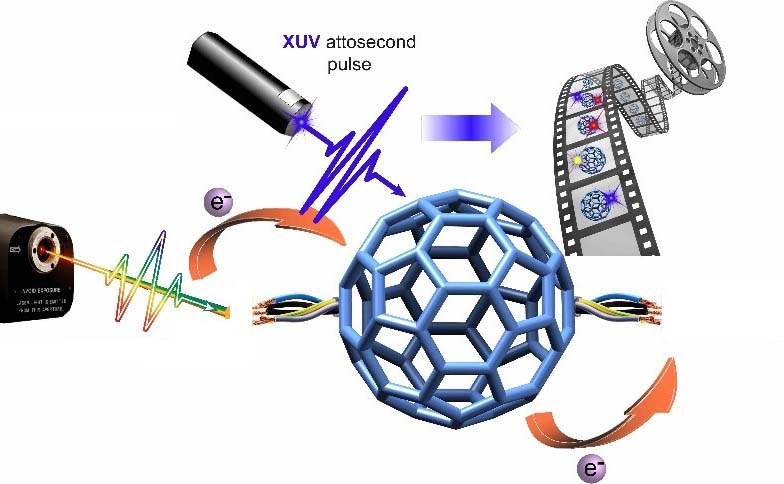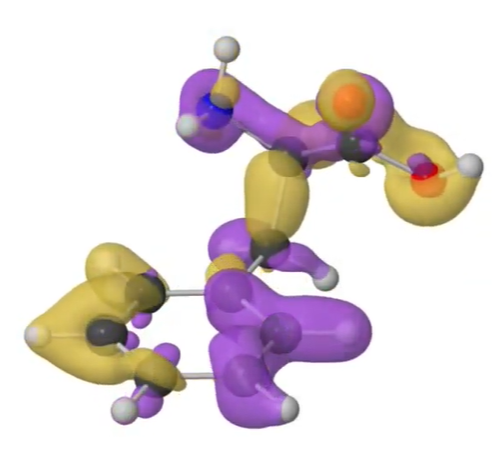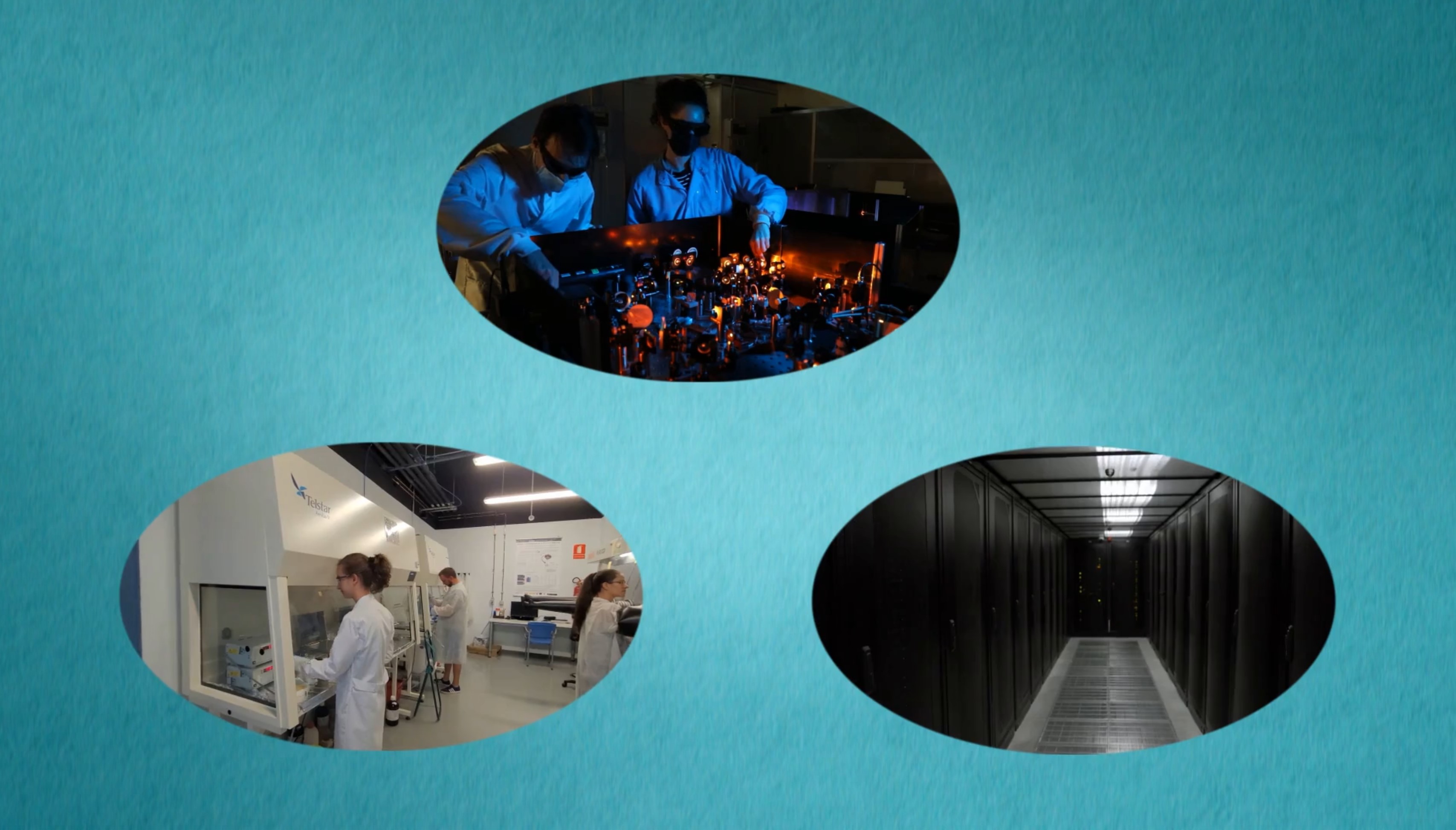TOMATTO, el proyecto europeo que quiere capturar los electrones en movimiento
16.05.2023

- TOMATTO aims to capture ultrafast electron dynamics to enhance solar energy conversion efficiency.
- The European Research Council (ERC) funds this Synergy project in which three research groups from Spain and Italy work together.
- TOMATTO is coordinated from the Madrid Institute of Advanced Studies in Nanoscience (IMDEA Nanociencia).
Madrid, May 16th, 2023. The power of curiosity has driven the humanity to discover a plethora of phenomena by pushing the frontiers of knowledge. The deep understanding of diverse events has led us to develop tools and mechanisms that currently make our lives easier. For instance, recording events in short periods of time has allowed us to perceive the intricacies of countless processes in mechanics and engineering. Going down the scale, being able to measure in ultrashort intervals has provided us with information on the excitation of molecules that in turn reveals the properties of the probed material with important implications in applied technologies.
Recording these ultrashort processes provides us with a global picture of how molecules and atoms behave in a material. One of the most relevant process that have direct macroscopic implications is the mechanism of charge transfer that governs solar energy conversion. Nowadays, the efficiency of such process is below 25%, accounting for extensive room for improvement. As Prof. Feynman announced in 1959, there is plenty of room at the bottom, and so it is in this case.
The project “TomATTO” -The ultimate Time scale in Organic Molecular opto-electronics, the ATTOsecond- is born with the purpose of looking in an ultrashort time scale, the attosecond, to capture movement of the electrons in molecules. This ambitious project aims to understand the complexity of photo-induced charge transfer and optimise the design of new organic materials towards their application in solar cells. The design of new tailored materials would mean a major technological leap that could eventually meet the pressing demand of producing energy in a sustainable way.
The mission of TOMATTO
Photoinduced electron transfer (ET) and charge transfer (CT) processes occurring in organic materials are the cornerstone of technologies aiming at the conversion of solar energy into electrical energy and at its efficient transport. The TOMATTO project plans to take a closer look at this problem through advances in three areas 1) attosecond science, 2) organic synthesis and 3) computational modelling. The objective is to provide clear-cut movies of ET/CT with unprecedented time resolution. The ultimate goal is to adapt the molecular response of engineered organic materials to optimize the processes initiated by light absorption, leading to the desired opto-electronic behaviour.
 The usual strategy to improve solar cells efficiency is chemical modification, which is based on chemical intuition and trial-and-error approaches. In this regards, there is no control on the ultrafast electron dynamics induced by light. Achieving the latter is not easy, as the natural time scale for electronic motion is the attosecond (10-18 seconds), which is much shorter than the duration of the probing femtosecond laser pulses. With femtosecond pulses, one can visualise slower processes, such as isomerization, nuclear vibrations or hydrogen migration which certainly affect later ET/CT at longer time scales. However, real-time imaging of electronic motion is possibly the only way to fully understand and control the early stages of ET/CT, and by extension the coupled electron-nuclear dynamics that come later and lead (or not) to an efficient electric current.
The usual strategy to improve solar cells efficiency is chemical modification, which is based on chemical intuition and trial-and-error approaches. In this regards, there is no control on the ultrafast electron dynamics induced by light. Achieving the latter is not easy, as the natural time scale for electronic motion is the attosecond (10-18 seconds), which is much shorter than the duration of the probing femtosecond laser pulses. With femtosecond pulses, one can visualise slower processes, such as isomerization, nuclear vibrations or hydrogen migration which certainly affect later ET/CT at longer time scales. However, real-time imaging of electronic motion is possibly the only way to fully understand and control the early stages of ET/CT, and by extension the coupled electron-nuclear dynamics that come later and lead (or not) to an efficient electric current.
In this project, scientists propose to overcome the femtosecond time-scale bottleneck and get direct information on the early stages of ET/CT generated by the absorption of visible and ultraviolet light on organic opto-electronic systems. By extending the tools of attosecond science beyond the state of the art and combining them with the most advanced methods of organic synthesis and computational modelling, TOMATTO researchers aim to revolutionize the field of organic optoelectronics, with an obvious impact in all related technologies.
An unprecedented time resolution
An electron travels one "orbit" around a nucleus in about 150 attoseconds. The attosecond (one trillionth of a second, or 10-18 seconds) is therefore the natural time scale on which the motion of electrons in matter takes place. To get an idea of its magnitude, one attosecond is to one second what one second is to the age of the universe. These figures illustrate the scientific and technical challenge of measuring events on such a tiny time scale.
 However, such scale is key in chemistry. All chemical reactions encompass breaking and making of bonds between atoms. And those responsible for the bonds to form or break are the electrons. Thus, chemical reactivity is a dynamic process resulting from the combined movement of electrons and atomic nuclei. Accessing the attosecond time scale means opening the possibility to alter the chemical bonds of a molecule and thus its chemical characteristics and reactivity, nothing more and nothing less.
However, such scale is key in chemistry. All chemical reactions encompass breaking and making of bonds between atoms. And those responsible for the bonds to form or break are the electrons. Thus, chemical reactivity is a dynamic process resulting from the combined movement of electrons and atomic nuclei. Accessing the attosecond time scale means opening the possibility to alter the chemical bonds of a molecule and thus its chemical characteristics and reactivity, nothing more and nothing less.
Accessing the attosecond time scale means opening the possibility to alter the chemical bonds of a molecule and thus its chemical characteristics and reactivity.
The use of attosecond lasers will open up the possibility of producing substances that cannot be synthesised by traditional processes, as well as suppressing unwanted reactions that occur naturally.
In particular, the TOMATTO project aims to unveil the role of the early electron dynamics that are induced by visible and ultraviolet light in the electric currents produced in organic materials at longer time scale. How do the early electronic dynamics and its interplay with nuclear dynamics affect such electric currents? And how this electron charge dynamics can be manipulated by chemical modification so as to improve the efficiency of ET/CT processes at a longer time scale? To this end, synergic efforts between laser physicists, organic chemists and theoreticians is compulsory.
Three grand interconnected challenges
The generation of electric currents that power human activities in a sustainable way is a top priority for mankind. In this respect, getting a handle on the intricacies of ET/CT processes in organic materials is fundamental to enhancing the efficiency of energy conversion in solar energy devices. Given that the early stages of these processes occur on ultrafast –attosecond- time scales, their access is technically quite challenging.
The project TOMATTO faces three interconnected grand challenges that involve very different expertise. First, recording and understanding the very first electronic processes initiated by light absorption in molecules and their dependence on the molecular structure. Second, engineering novel molecular systems as an effective method to tailor and control the initial electron dynamics. And third, developing advanced and unconventional computational methods to rationalize the observations and guide the experimental research.
 Due to the strong interconnection among such challenging objectives, the TOMATTO project implies an interdisciplinary effort, where innovative approaches in different research areas must work together. This is possible thanks to the synergic work of the three research teams of Prof. Fernando Martín (IMDEA Nanociencia, Universidad Autónoma de Madrid), Prof. Nazario Martín (Universidad Complutense de Madrid) and Prof. Mauro Nisoli (Politecnico di Milano).
Due to the strong interconnection among such challenging objectives, the TOMATTO project implies an interdisciplinary effort, where innovative approaches in different research areas must work together. This is possible thanks to the synergic work of the three research teams of Prof. Fernando Martín (IMDEA Nanociencia, Universidad Autónoma de Madrid), Prof. Nazario Martín (Universidad Complutense de Madrid) and Prof. Mauro Nisoli (Politecnico di Milano).
Continuous feedback between computational modelling, organic synthesis and attosecond beamline developments is the key to find the answers TOMATTO project is looking for. The combination of attosecond science, organic synthesis and computational modelling will allow TOMATTO researchers to capture the ultrafast electron dynamics aiming to enhance solar energy conversion efficiency.
A synergic consortium
Fernando Martín, coordinator of TOMATTO, is an Associate Research Professor at IMDEA Nanociencia and Professor of Theoretical Chemistry at Universidad Autónoma de Madrid (Spain). His research group is focused on the theoretical study of the dynamics in isolated quantum systems, producing theoretical predictions and interpretations that can lead to a better understanding of these systems, following closely the experimental findings, as well as to propose new experimental situations.
Nazario Martín is Professor of Organic Molecular Materials at Universidad Complutense de Madrid and vice-Director at IMDEA Nanociencia (Spain). His research group is focused on carbon nanostructures as materials for the preparation of photo- and electroactive functional organic molecular systems.
Mauro Nisoli is Professor of Physics in the Politecnico di Milano (Italy). His research group activity concerns the development of new laser sources for the generation of ultrashort optical pulses (in the femtosecond regime) and their application to the study of dynamical processes in materials.
A European project coordinated from Madrid
The TOMATTO project is been funded by the European Research Council (ERC) through a Synergy Grant that promote the cooperative investigations of research groups working in complementary fields. The aim is to support close collaboration leading to a fruitful cross-fertilization of disciplines capable of producing innovative results on problems of high scientific relevance.
In the words of Prof. Nazario Martín "it should be noted the initiative of the Regional Government of Comunidad de Madrid to convene in 2018 grants for the implementation of Synergy Projects in R&D, that encouraged the beneficiary groups to submit proposals to the ERC Synergy Grants, and it has been essential to obtain the funding from the ERC”.
IMDEA Nanociencia is an international centre focused in developing frontier research in Nanoscience and Nanotechnology in connection with innovative industries. The multidisciplinarity of the Institute contributes to solve problems of great strategic importance for companies and other public institutions, based on a better understanding of phenomena at the nanoscale. Prof. Rodolfo Miranda, Director of IMDEA Nanociencia and Professor of Physics at the UAM, says: "the scheme offered by our Institute is the ideal basis for coordinating this ERC Synergy consortium which represents for the Institute, and equally for both universities, an important qualitative leap from which Madrid as a whole will benefit by attracting competitive funds and human capital to our region".
TOMATTO project has received funding from the European Research Council (ERC) under the European Union’s Horizon 2020 research and innovation programme (grant agreement No 951224).


More information:
Contact:
Prof. Fernando Martín
fernando.martin [at]imdea.org
Oficina de Comunicación de IMDEA Nanociencia
divulgacion.nanociencia [at]imdea.org
Twitter: @imdea_nano
Facebook: @imdeananociencia
Instagram: @imdeananociencia
Source: IMDEA Nanociencia
Download



